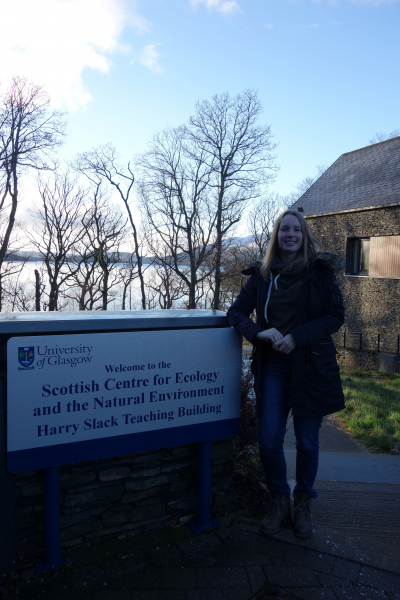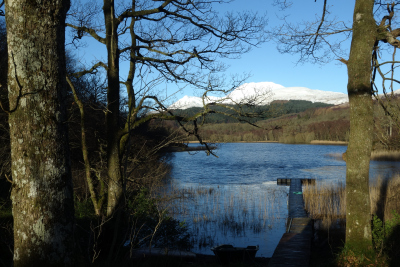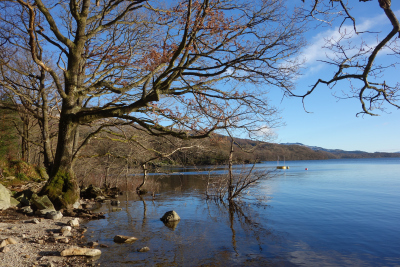Page path:
Kim Vane
Report of GLOMAR PhD student Kim Vane about her participation in the "Stable Isotope Mixing Models using SIAR, SIBER and MixSIAR" course, Loch Lomond, Scotland, 11 - 15 January 2016
Stable isotopes provide us with tracers to make connections between consumers and sources to have insight in, for example, diets of animals. To make such connections we can use models such as SIAR, simmr and MixSIAR. These models are capable of calculating dietary proportions of organisms by comparing the isotopes (mostly δ13C and δ15N) in the sources with those in the animal. The correct interpretation of the results of such a models requires some background in the mathematics and workings of the isotopes.
This was comprehensively done in the statistics course ‘Stable Isotope Mixing Models using SIAR, SIBER and MixSIAR’ that was organised by PR Statistics in a beautiful location at Loch Lomond, Scotland. Given by the writers of the R-scripts, Dr. Andrew Jackson and Dr. Andrew Parnell from the University of Dublin, this was a very detailed course about the different models which were explained to the basics. They were very helpful and always willing to answer questions. In a 4-day intensive course they covered not only the models but also the way the ecological data should look like and some R basics. Although the latest model, MixSIAR, has many interesting features, it was difficult to understand the mathematics behind it. However, it was explained to such an extent that you could confidently use and interpret it. At the end of the course they dedicated some time to discuss your own data. This was very helpful as I am working on compound specific isotope analysis, which has a slightly different input into the model and interpretation.
I therefore benefitted greatly from this course that improved my understanding of these models. Personally, I think it saves a lot of time in your PhD to do a statistics course. You intensively look into a specific application under the guidance of experts and could prevent mistakes by self-interpreting the statistics. It was also very useful to learn the new features in the models and interact with a group of people primarily working on isotopic studies in ecology. Moreover, the course also came on the right moment in my PhD, as I have most of my data and will start to analyse them with these models. Therefore, I thank GLOMAR for providing me with this opportunity.
I would also recommend the courses given by PR statistics (www.prstatistics.com), which organizes a large variety of statistics courses that are mainly applicable to ecological studies.
This was comprehensively done in the statistics course ‘Stable Isotope Mixing Models using SIAR, SIBER and MixSIAR’ that was organised by PR Statistics in a beautiful location at Loch Lomond, Scotland. Given by the writers of the R-scripts, Dr. Andrew Jackson and Dr. Andrew Parnell from the University of Dublin, this was a very detailed course about the different models which were explained to the basics. They were very helpful and always willing to answer questions. In a 4-day intensive course they covered not only the models but also the way the ecological data should look like and some R basics. Although the latest model, MixSIAR, has many interesting features, it was difficult to understand the mathematics behind it. However, it was explained to such an extent that you could confidently use and interpret it. At the end of the course they dedicated some time to discuss your own data. This was very helpful as I am working on compound specific isotope analysis, which has a slightly different input into the model and interpretation.
I therefore benefitted greatly from this course that improved my understanding of these models. Personally, I think it saves a lot of time in your PhD to do a statistics course. You intensively look into a specific application under the guidance of experts and could prevent mistakes by self-interpreting the statistics. It was also very useful to learn the new features in the models and interact with a group of people primarily working on isotopic studies in ecology. Moreover, the course also came on the right moment in my PhD, as I have most of my data and will start to analyse them with these models. Therefore, I thank GLOMAR for providing me with this opportunity.
I would also recommend the courses given by PR statistics (www.prstatistics.com), which organizes a large variety of statistics courses that are mainly applicable to ecological studies.





